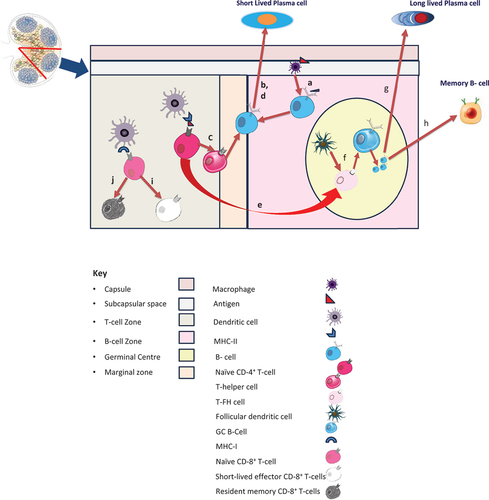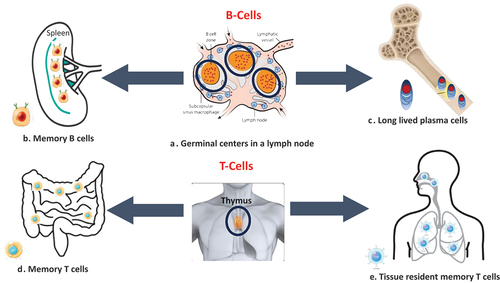Figures & data
Table 1. A summary of currently licensed vaccines grouped based on their duration of protection, along with other vital parameters.
Figure 1. Schematic representation of vaccine-induced immune responses in the draining lymph node.
(Adapted from: Chen Z, Gao X, Yu D. Longevity of vaccine protection: Immunological mechanism, assessment methods, and improving strategy. View, 2022; 3, 20200103).

Figure 2. Key immunological determinants of durable vaccine-induced immune responses.
Both B-cell and T-cell responses help in providing durability to vaccine-induced immune responses. A. Germinal centers (encircled) in lymph nodes are factories of B-cell production and their maturation. B. Memory B cells in lymphoid tissues like the spleen. C. Long-lived plasma cells move to the bone marrow niches and survive there, providing long-lasting immunity.
D. Memory T-cells in the lamina propria and epithelium of the intestine. E. Tissue-resident memory T-cells (TRM) in the nasal passages and lungs. These cells are in non-lymphoid tissues, such as skin, gut, and lung airways, and do not recirculate through the blood. Most T cells mature in the thymus gland before subsequent export to the periphery.

Table 2. Factors determining durability of protective immunity.
